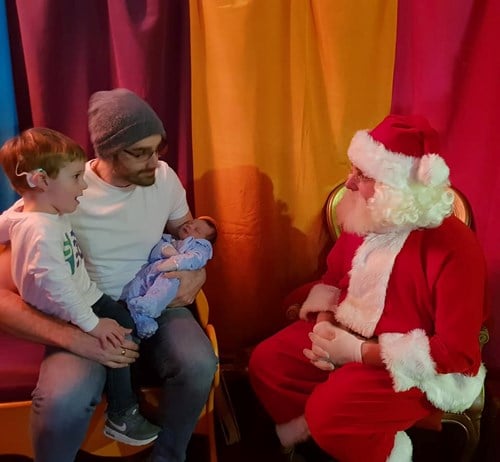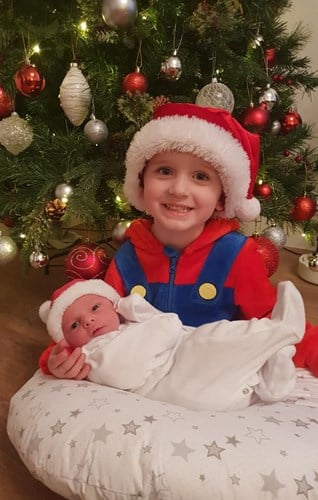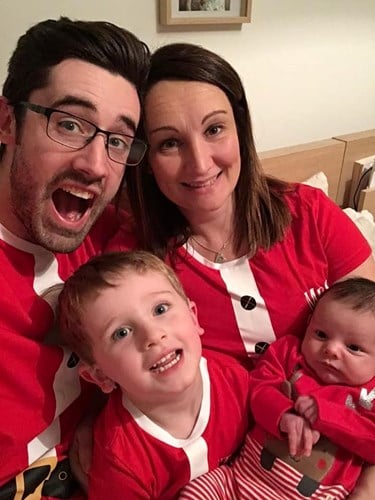First Christmas with a deaf child
Published Date: 09 Dec 2021
Your child’s first Christmas is a magical milestone that you’ll want to celebrate, regardless of their age or how aware of the festivities around them they are. It’s a time for showing your little one off and capturing memories on camera as well as choosing those exciting first gifts for them.
However, your first Christmas with a deaf child can also be pretty daunting. What do you buy for a baby who cannot hear when every baby toy around is noise orientated? In the lead up to Baye’s very first Christmas, I felt a certain sadness at the thought of the toys he couldn’t access. The mums from our local baby group were all chatting about baby instruments, sound books and other musical toys. I initially felt a bit lost about what to buy for my profoundly deaf nine-month-old. I soon realised that I would be hard pressed to find toys that weren’t sound focused for his age. However, I also realised that most baby toys target all the senses, so although he may not hear the music or sound, he could see flashing lights, feel vibrations and manipulate different parts which would all aid his development.

For both Baye and Flynn, who was only one month old on his first Christmas, I bought those musical, noisy toys and allowed them to explore them through all of their senses. I also made sure to buy toys that were sensory focused - such as torches, projectors, sensory balls and books - so that they could explore texture and light. I focused on toys that would develop their fine and gross motor skills, like activity cubes, sensory ball pools and ride on toys. Melissa and Doug do some amazing toys that enhance fine motor skills whilst also allowing for exploration and problem solving.
By their second Christmas, both boys had gotten cochlear implants, so they had access to sound. However, Christmas can be an overwhelming time for newly implanted children. For Flynn, he had only been activated for two months at his second Christmas. He was only just getting used to sound, so the noisy, busy festive activities were often too over-stimulating for him. He needed to take breaks from listening regularly. Family gatherings were also a source of sensory overload, and seeing so many familiar faces alongside lots of unfamiliar voices in one place was all a bit much at times. Even the rustling of Christmas paper when unwrapping gifts caused upset due to another new sound that he had never heard before. It was the same for Baye on his first birthday, but by his second Christmas he had been hearing for nine months, so he coped a lot better with his first hearing Christmas!
Each child is unique and will react differently; however, for newly implanted or aided children, I would advise that you take it slow. Let them explore the sounds of Christmas at their own pace, and if they need a quieter, less stimulating Christmas than you usually have, go with it. Don’t push them into an environment that isn’t yet comfortable. Consider seeing family in smaller groups and looking for alternative activities.
Trips to see Santa, Christmas parties, pantomimes and Christmas experience events are all part of the festive period, and as children grow, they will likely want to be part of it all. There are some great accessible events out there. We have seen pantomimes and shows with a BSL interpreter. We have had accessible smaller group priority when participating in group events such as Kielder Winter Wonderland. We have attended deaf-friendly Christmas parties as well as visited a BSL signing Santa Claus.
There is a lot out there to make events more accessible to deaf children, but finding out about it isn’t always easy. I have found that joining the National Deaf Children’s Society’s local groups and following parent and carer forums online have been a valuable source of information. People will often share event information or sign post you to suitable activities. It is also worth asking venues and activity organisers directly what adaptations they can offer for deaf children. Today, both our boys enjoy accessing most mainstream Christmas activities; however, we still attend deaf-friendly events too.

Other things to consider at Christmas as your child grows
- Radio aids can be really useful during busy or outdoor festive activities, especially when there is a lot of background noise.
- During family meals and present swapping, be cautious of background noise such as televisions, music or toys as this can sometimes exclude deaf children from the natural conversation taking place.
- Round tables allow deaf children to see all faces and give access to lip reading.
- Tablecloths soften noise reverberation from cutlery, drinks etc.
- Fairy lights are a magical part of Christmas; however, when talking to deaf children, ensure that you have a good source of light as well as those fairy lights so that they can see your face and lips clearly.
- Encourage family and friends to take turns when talking to allow deaf children time to keep up with the conversation.
Most importantly, enjoy making those magical memories and don’t get too bogged down with what they can’t access. Instead, find ways to make it accessible for your child. You are your child’s biggest advocate after all!
